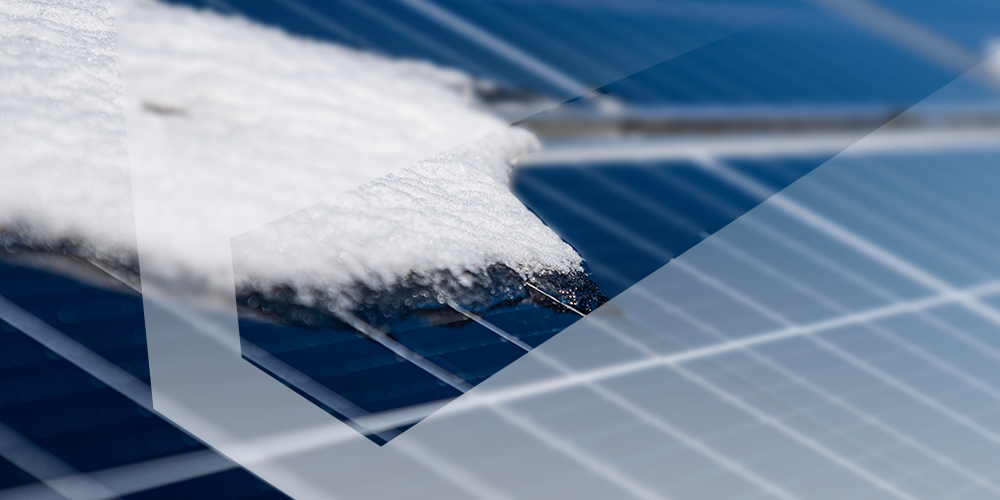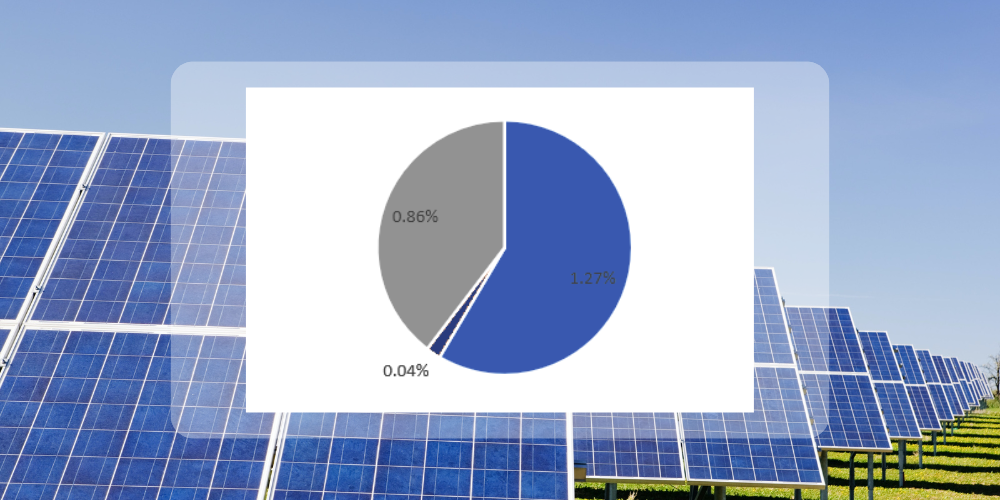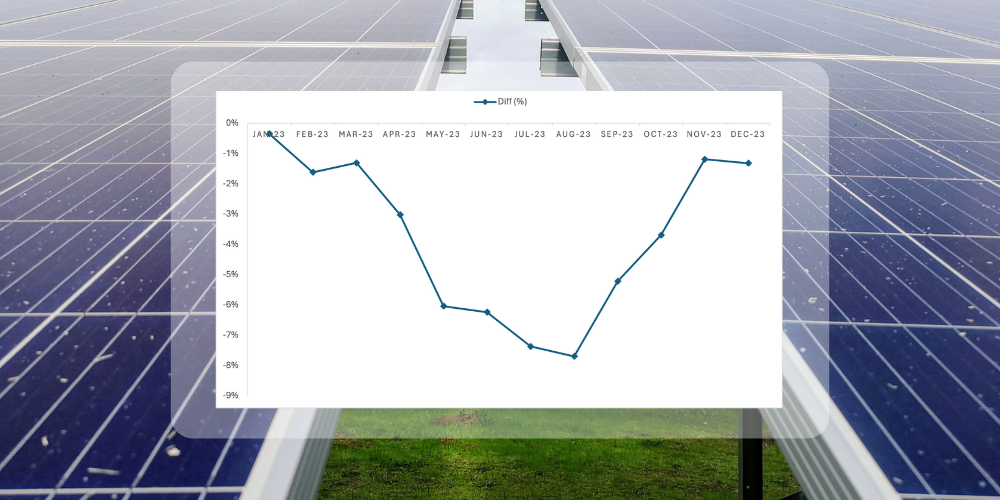Solar tracker systems are an advanced technology for mounting PV panels. They use motors to automatically move the panels to follow or track the sun, orienting the panels to ensure that sunlight strikes at an optimal angle to the panel’s surface. This maximizes the ability of the panels to convert incoming light into energy by maximizing irradiance on the panels and reducing reflective losses.
Not all solar farms have trackers installed, but for those that do, ensuring that trackers are functioning optimally is critical to maximizing production.
Available tracker systems
Most of the trackers installed on PV farms are horizontal axis systems. Modules are mounted on racks that rotate on a single, horizontal axis, oriented north and south. In most cases, neighbouring rows are controlled in unison by mechanical activators connected across multiple rows.
More complex systems have also emerged, with row-level tracking that adapts to non-planar terrain, responds to fluctuations between beams and diffuses irradiance.
Clir's tracker detector
Trackers are one of the few moving parts of a solar farm and are therefore prone to malfunction. If a solar farm has trackers and Clir has access to the tracker data, the detector will identify when the tracker becomes stalled or does not properly follow the sun, and quantify the lost energy associated with this underperformance.
Understanding the losses associated with tracker issues allows owners to see how trackers are performing on site and if they need to be more carefully maintained. Benchmarking tracker losses allows owners to understand how their technology compares to others.
![]()
In the above example, the orange line is the potential energy that the power can produce and the blue line is the inverter's active power. The shape of the two lines shows that the inverter's active power is not producing as excepted at the beginning of the day, due to now tracking the sun as closely. By 13:00, the tracking issue has been fixed, and the active power matches the potential energy output of the inverter.
Solar tracker risks
There are several issues that may impact the performance of the tracker on a solar farm:
- Mechanical failures: Solar trackers consist of moving parts that are susceptible to wear and tear. Mechanical failures, such as broken gears, bearings or drive systems, can lead to reduced tracking accuracy or complete failure.
- Electrical issues: Faulty electrical connections, damaged wiring or problems with motor operation can impact the tracker's ability to move and adjust as needed.
- Sensor malfunction: Solar trackers rely on sensors to detect the position of the sun and adjust their orientation accordingly. If these sensors malfunction or become misaligned, the tracker may not accurately follow the sun's path.
- Software/Control system errors: The control software of solar trackers plays a crucial role in ensuring they respond accurately to changes in sunlight angles. Software bugs or control system errors can lead to improper tracking.
If a tracking system fails to correctly track the sun through the day, power generation can be reduced in the following ways:
- Irradiance on the modules is reduced.
- More light is lost to reflection than necessary.
- Unnecessary shading on subsequent rows is caused by incorrectly positioned modules.
Therefore, it is important to identify and rectify tracker faults to avoid lost revenue.
Tracker detector use cases
Warranties
Tracker warranties cover several key aspects, with performance guarantees typically spanning 10 to 25 years. This guarantee exists to ensure that the tracker meets specific performance metrics, such as tracking accuracy or availability, often guaranteeing at least 98% uptime.
To raise any claims, owners need detailed documentation of the incident, maintenance records and operational logs. Clir’s clients have access to data and analytics through the app, including the inverter production curve and the tracker losses detector data. Clients can identify patterns of underperformance due to misalignment, resulting in a reduction in energy output over time. By documenting these events with timestamps and identifying the affected trackers, it can reveal persistent misalignment due to specific issues, such as mechanical wear in the drive system.
If the issues are covered under the OEM warranty, the client can leverage the data to raise a claim for the repair or replacement of the defective drive components. The evidence provided by the tracker losses detector can also facilitate a swift resolution by the manufacturer, ensuring the farm returns to optimal performance with minimal disruption.
Maintenance
If a solar farm has trackers, understanding this loss allows solar farm owners to see how trackers are performing on site and if the trackers are performing within expectations. If they are performing outside of expectations or are malfunctioning, maintenance schedules can be adjusted in order to minimize component downtime and maximize performance.
By comparing the losses on a consistent basis against peer farms or historical production, owners can understand when the trackers begin to malfunction to efficiently address issues. If benchmarking data is showing consistently decreased production compared to peers, deeper investigation into issues impacting the tracker may be needed.
Tracker losses
With component risks, operations and maintenance teams need access to quality data to understand when issues or malfunctions are happening. Clir’s detector enables a deep understanding of losses related to tracker malfunctions. By benchmarking these losses, owners an understand how O&M teams are managing risks and how their component technology compare to the industry.




